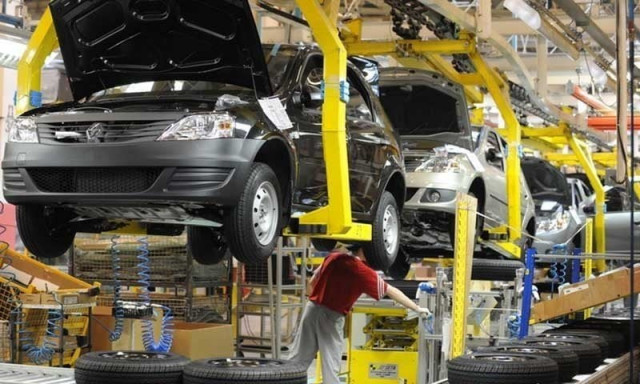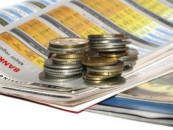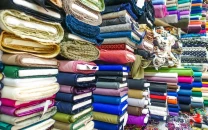Policy should be outward-looking
Deletion programmes are major hurdle to integration into global value chains

The new five-year auto policy is in its final stages of approval. At least since 1995, having a special policy for this sector has been a regular feature of every government’s economic strategy.
All these have been inwardlooking with two common aims: achieving higher localisation (deletion or import substitution) and increasing production to at least 500,000 vehicles to have economies of scale. These aims were never achieved, as, in many ways, they were contrary to each other. Pakistan’s annual production, at less than 200,000 vehicles, has stayed well below the set target.
Similarly, except for motorcycles and tractors, there has not been any worthwhile progress in achieving any of the deletion targets set over the last two decades. The auto parts that do not require sophisticated engineering, such as seats, batteries, tyres, rubber, plastic or simple metal components, were easily localised. But others requiring high precision engineering, such as engine or transmission, continue to be imported as knocked down kits.
This is despite the government having tried every policy option, including tariff and non-tariff protection for localised parts and lower tariff rates for components and raw material. After the new World Trade Organisation (WTO) rules forbidding deletion policies came into effect in 1995, most developing countries opted to comply with them either on their own or after losing their cases at the WTO dispute settlement system.
They realised that the localisation programmes were a major hurdle towards their industries’ integration into global value chains, which could help them achieve export-led growth. All those countries that gave up localisation and instead adopted the standardised lean method to grab export markets now have a considerable advantage over Pakistan, even though the latter’s industry was comparatively better placed than theirs only two decades ago. For example, until the late 1990s, Indonesia was an ardent follower of localisation policy.
Following a WTO challenge by the United States, European Union and Japan, it scrapped its compulsory use of local content policies for domestic cars in the early 2000s. Consequently, its cars became more competitive due to its auto industry choosing to import high-quality parts from worldwide sources. Also, the foreign direct investment (FDI) started pouring in. Indonesia manufactured about the same number of cars as Pakistan in 2003, but now it produces five times more. It has now become the top producer and exporter of vehicles in the Association of Southeast Asian Nations (Asean), with its exports of over 330,000 units worth $3 billion (one-third of production) and parts exceeding $1.5 billion in 2019.
Pakistan does not export any cars and its exports of auto parts at $15 million are onehundredth of Indonesia’s. Indian and Turkish auto industries witnessed similar revolutionary changes once they were forced to give up deletion programmes. Pakistan’s last automotive development policy, 2016- 21, was a breath of fresh air.
Although it continued with the protectionist and anti-export bias policies, nevertheless it provided some openings for new entrants. Greenfield investors were allowed tax concessions and some other relaxation in rules. Later on, under the Pakistan Electric Vehicles Policy 2020- 25, several tax incentives were extended for electric vehicles. These measures have resulted in breaking the monopoly of the existing three manufacturers and several new investors are entering the field. These changes in the policy have so far brought a further investment of about $500 million. Competition among the new and old established assemblers is growing.
There is hope that this would end malpractices, such as consumers having to pay “own money” in addition to the normal price of the car. Also, the long wait time may be reduced to a reasonable period. Unfortunately, so far, none of the many auto development policies over the last 30 years eyed the export option. High tariff protection provided an incentive to sell in the local market rather than look at the export market, as the industry had to compete there without any tariff crutches. Reportedly, in the new policy, the assemblers will be required to export 10% of the import value by the end of five years. But fixing targets has never been of much consequence.
In any case, such targets will be in contravention of WTO rules and can be easily challenged. Like other successful auto exporters, Pakistan’s industry has to become part of the global supply chain and meet international safety and carbon emissions standards. The government’s role should be limited to the facilitation of assemblers to achieve these standards, rather than become a partner of the industry against the interests of consumers.
Through efficient practices such as the worldwide trend of ‘just-in-time’ or ‘lean’ production should cut costs rather than localisation policies. Once the size of the pie increases through higher production of cars, localisation will follow due to economies of scale. This has been the experience of all successful autoproducing countries. We must realise that subsidies to the car industry through high tariffs cannot continue for too long. If any subsidies are to be given, they should only be to encourage the manufacturing of environment-friendly and safer vehicles.
Unless the industry becomes self-sustaining without the crutches of tariffs and SROs, it might end up meeting the same result as happened in the case of Australia and New Zealand, which had to shut down their car production facilities for better allocation of resources elsewhere.
THE WRITER HAS SERVED AS PAKISTAN’S AMBASSADOR TO WTO AND FAO’S REPRESENTATIVE TO THE UNITED NATIONS AT GENEVA



















COMMENTS
Comments are moderated and generally will be posted if they are on-topic and not abusive.
For more information, please see our Comments FAQ